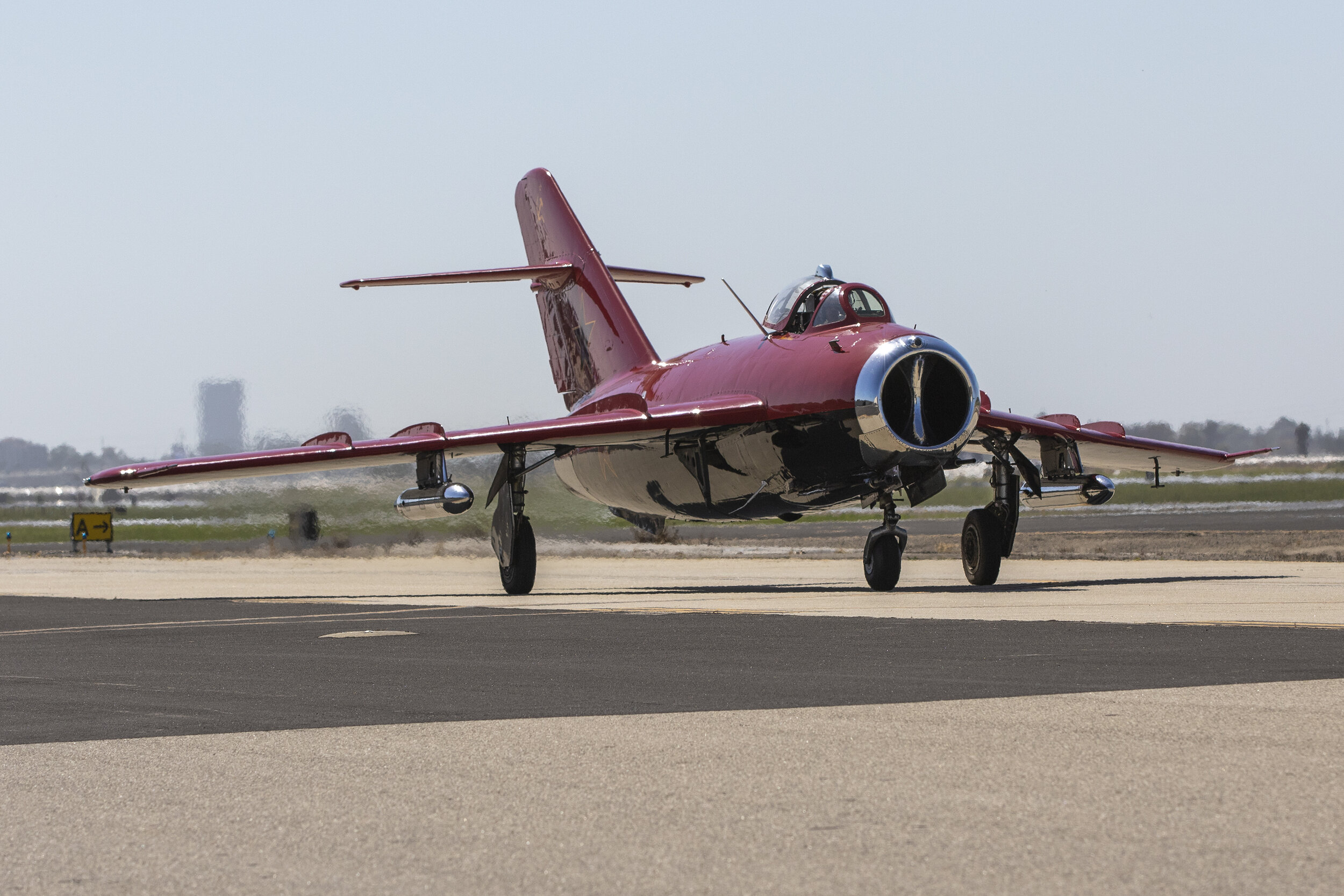with afterburning Klimov VK-1F engine
The Mikoyan-Gurevich MiG-17 is a Russian fighter jet that was developed in the 1950s as a successor to the MiG-15 and saw combat in the 1960s during the Vietnam War. Although not supersonic, it was capable of very tight turns and armed with three cannons, making it deadly against American fighters like the F-4 Phantom and the F-8 Crusader. The MiG-17 was the first Russian fighter jet to have an afterburner, which dumps raw fuel in to the exhaust to increase the thrust.
The MiG-17 is visually differentiated from the earlier Mig-1G by wings which are more swept back, a longer fuselage, three fences on each wing instead of two, and a fin on the bottom of the fuselage. Over 10,000 were built and it was the standard general purpose day fighter for many Soviet satellite countries during the Cold War.
Top speed is 680 mph in level flight and over 710 mph with the afterburner. It can climb to 30,000 feet in only three minutes.
Jason's airplane is a MiG-17F, with the "F" indicating that it has a Klimov VK-1F engine with an afterburner. This particular aircraft was built in Poland in 1959 and entered service with the Polish Air Force.
“The MiG-17 can maintain an 8G turn, which keeps the action front and center for airshow crowds. ”






